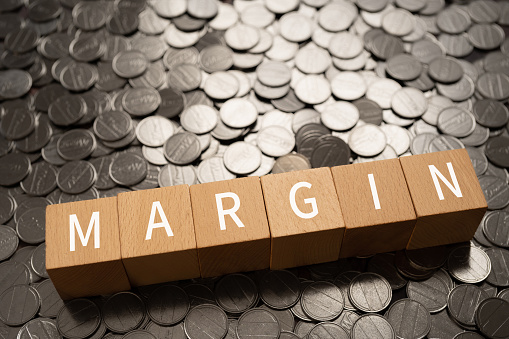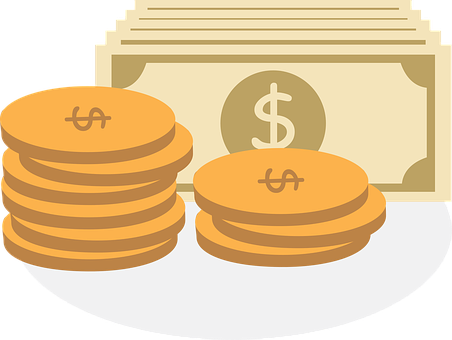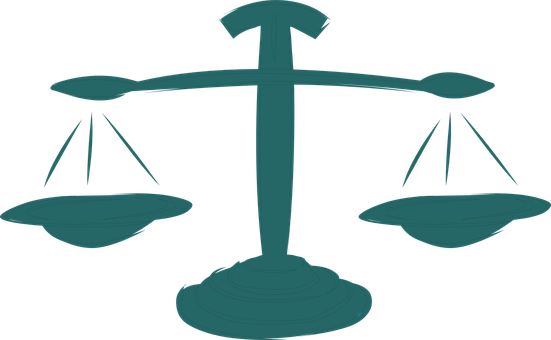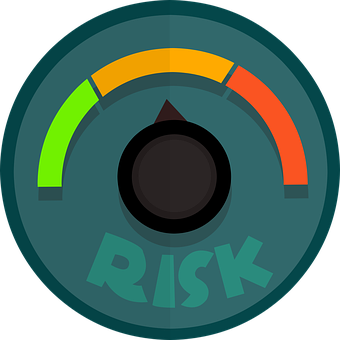Margin Account
Capable of getting a loan from the broker so that they can buy stocks or other financial items
When a customer has a margin account, they are capable of getting a loan from the broker so that they can buy stocks or other financial items. The cash and the securities purchased to serve as collateral for the loan in the bill, which has a regular interest rate.

The consumer employs leverage by investing with borrowed funds, increasing both the customer's gains and losses. As a result, an investor will receive a higher total return than they would have if they had just bought assets with their own money.
The brokerage company's decision to impose interest on the margin funds for the duration that the loan is unpaid raises the cost of the investor's purchase of the securities.
If the securities lose value, the investor will be in the red and will be required to pay the broker interest. In addition, the brokerage company will send the investor a margin call if the equity falls below the maintenance margin threshold.
The investor must deposit more funds or sell some shares within a predetermined window of time—typically within three days, though in some cases it may be less—to make up all or part of the difference between the security's price and the maintenance margin.
If a customer does not comply with a margin call or carries a negative balance in their account, a brokerage firm has the right to sue them.
The broker may also ask the customer to increase the capital in a margin account and even sell the investor's securities if the broker believes their funds are at risk or sell the investor securities.

The investor might lose more money than was first put into the account. Because of these factors, it should only be used by experienced traders who know the increased investment risks and conditions involved.
Stocks held in an IRA, a trust, or any other fiduciary account cannot be purchased on margin with a margin account. Additionally, stock trading accounts with less than $2,000 cannot be used with it..
Choosing a Brokerage Account
One of the first decisions you must make when applying for a new brokerage account is whether you want cash or a margin account. It resembles the distinction between a debit card and a credit card somewhat. Both assist you in making purchases and provide fast access to money.

However, purchases made with a debit card are only as much as the available cash in your bank account, while purchases made with a credit card are potentially much more excellent. You can only invest the money placed into your brokerage cash account.
You are given a line of credit through margin accounts, allowing you to leverage your cash amount. However, for beginners, their added intricacy makes them dangerous.
1. How Does a Cash Account Work?
With a cash account, you can use the money in your account to buy stocks. For instance, if you've put $5,000 down, you can buy up to $5,000 worth of shares. You must sell some of your assets or put more money into your account to purchase more.
Notably, with a cash account, your maximum possible losses are always the sum of your investment. So, for example, the highest money you can lose on a $5,000 stock investment is $5,000. Because of this, cash accounts are preferable for novice investors.
2. How Does It Work?
You put money into it, and the brokerage also makes a loan to you. You have more alternatives and run a higher risk with this type of account.
You have more freedom to assemble your portfolio, but any investment losses might affect your own money and any borrowed funds.
On a loan from a margin account, interest is assessed. So, margin trading is a wager that the equities you buy will increase in value faster than the margin interest you pay.
For instance, if you had a margin loan with an APR of 8%, you would need to see a rise in your investments of at least 8% before you break even, and only then would you start to see a net benefit. Firms' margin rates differ, and they can be substantial.

The margin interest rates are around three to four percentage points more than what would be paid for a home equity line of credit.
In general, there is no predetermined payback plan for margin loans. You can take as long as you need to repay your loan, but interest will still be charged monthly. Furthermore, the assets you purchase in this account are security for the margin loan.
The SEC, FINRA, and other agencies have added a few conditions to these types of accounts. They establish basic standards, although your brokerage may have stricter guidelines.
Benefits
Opening this account provides advantages even if buying on leverage might be dangerous. When it comes to short-term cash flow requirements, this may be incredibly helpful and is typically free to keep.

You might not have time to wait for your broker to sell stocks and deposit the proceeds if you need money from your brokerage account immediately because settlement might take up to a few days.
If you have an available margin, your brokerage may be able to provide you immediate access to cash that you may later repay with a cash deposit or by selling assets. As long as you repay the loan quickly, the interest you'd pay on a margin loan is negligible.
Both up and down markets might benefit from using this type of account. If you'd instead take out a margin loan and wait for the market to rebound in low markets, you don't have to sell your stocks at a loss (but don't wait too long).
Margin may assist you in postponing a short-term capital gain, which can result in significant taxes while the market is rising — getting a margin loan while delaying taking advantage of the reduced long-term capital gains tax rates.
Dangers
The prospect that investments bought with credit might lose value presents the most significant risk associated with margin investing. Your earnings may rise, but your losses may also arise.
It is particularly challenging to make long-term investments with this account when you have to sell equities in response to a margin call since market losses have reduced the worth of your assets.

The investor has the luxury of waiting for a stock to increase in price before selling it at a loss while using a cash account. Unfortunately, that isn't the case with margin accounts, so you can lose money on a stock that subsequently made a comeback.
Purchasing with cash gives you the freedom to make investments for long-term gain and provides a floor for your losses. You will never pay more for assets bought with money than you put in, whether they are in a margin account or not.
Cash accounts vs. Margin accounts
A cash account with a brokerage company would require the user to pay for the underlying asset in full of the account balance. In contrast, the broker would lend you money using the cash in your account as leverage in a margin account. As a result, the latter have a higher risk-to-reward ratio.
1. Leverage
Leverage is frequently used in finance to describe how much a person or business has borrowed. Nonetheless, considering the world's physics-related roots could be helpful.

You might not be able to lift a boulder by yourself. But moving the rock is now achievable with the correct arrangement and a long, sturdy metal pole.
Your strength is the same; you just applied the idea of leverage to get a result that wasn't achievable with only your power.
The capacity to manage more shares than you could with your own money through leverage in investing creates new performance possibilities for your investment that would otherwise be considerably more difficult, if not impossible, to achieve – much like shifting that rock.
2. Requirements
Of course, there are some regulations. For example, as a regulation minimum, you must first deposit at least $2,000 with your brokerage, or 100% of the purchase amount, whichever is smaller.
Then, to receive the loan, you must satisfy an "initial margin requirement" – a rule stating that you can only borrow up to 50% of the entire investment's purchase price.
Therefore, if you wanted to buy $10,000 worth of stock, you could borrow $5,000, or 50% of that, and you would also need $5,000 in equity, which is the total value of your account minus any brokerage debt.

However, there are still more prerequisites. For example, the maintenance margin requirement requires you to maintain a specific level of equity in your account at all times after purchasing a stock on margin.
Although brokerages can and frequently do impose greater minimums, the regulatory minimum requires investors to hold 25% of the entire market value of their shares in equity.
3. Risk
The risks associated with purchasing any security also apply to cash brokerage accounts. For example, if you invest $5,000 in stocks, your investment would have lost $1,000 in value if the stock price dropped by 20%.
Your earnings and losses on a margin account are both inflated. Consequently, if the stock price drops by 20% and you have $5,000 to invest and borrow another $5,000 to acquire $10,000 shares, your investment will lose $2,000 in value.
Yes, these accounts offer a more prominent potential return than cash accounts, but the downside risk is far greater.

Unexpected and significant price movements can destabilize even generally considered stable investments, and it might be disastrous if you're utilizing leverage simultaneously.

You must deposit a certain amount of cash into your margin account before you can begin buying on margin. You must have either $2,000 or 100% of the investment's purchase price, whichever is smaller, according to FINRA.
Once you start making purchases on margin, you can often only borrow up to 50% of the price of the assets you wish to buy. Your buying power will virtually double as a result of this.
For instance, if you have $5,000 in your margin account, you may borrow an extra $5,000, enabling you to purchase assets for a total of $10,000.
You must have a minimum amount in your account after making a margin purchase of securities. This is known as the maintenance margin or the maintenance requirement.
It stipulates that you must own at least 25% of the assets housed in your margin account. You could get a margin call if the balance in your account drops below this level due to withdrawals or drops in the value of your investments.
When your brokerage requests that you boost the value of your account, either through a cash deposit or the sale of part of your assets, this is known as a margin call.
When you don't have enough money in your account to cover maintenance margin due to withdrawals or drops in the value of your investments, a margin call occurs.
Consider this example:
You spend $5,000 in cash and $5,000 in the margin. $10,000 is the total worth of your portfolio, of which $5,000 is your money.
Your portfolio would be worth $6,000 if the market value of your investments fell by 40%. Only $1,000 in your portfolio belongs to you because you still owe $5,000 on a margin loan.
For a $6,000 portfolio, a 25% maintenance margin would call for your equity, or the percentage of your account that is cash, to be at least $1,500 in this scenario.
The brokerage would demand that you either sell stocks to rebalance the portfolio or deposit an extra $500.
This risk might force investors to find more funding to keep the trade open. Cash accounts don't have this problem because they call for a single upfront cash investment.
Researched and authored by Tanay Gehi | Linkedin
Free Resources
To continue learning and advancing your career, check out these additional helpful WSO resources:




or Want to Sign up with your social account?